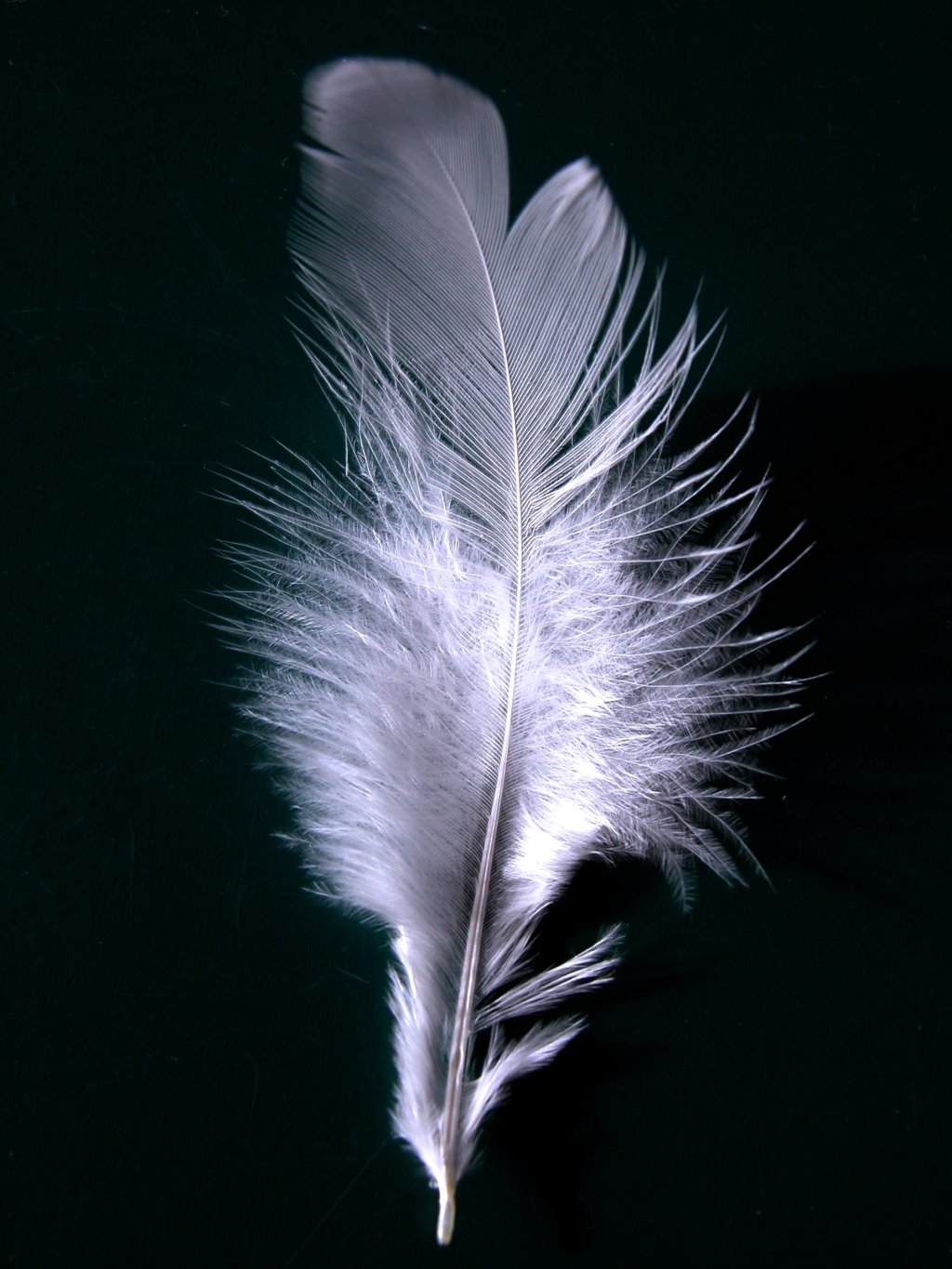
One might ask, “What possible connection can there be between feathers and God?” Well, if you take a moment to look with me at the lowly feather, you might find it to be a powerful argument for Intelligent Design.
On the surface, feathers seem somewhat plain. They do provide a lift surface for birds to use in flying, and they make a fine insulator against the elements, but what is so special about a feather? Well, if you will step a little closer, you will find them practically miraculous in their design.
Feathers are constructed of a shaft and vanes. The first thing we notice is that the shaft itself, while quite sturdy, is also quite hollow. This creates a lighter structure for the flyer. Nice touch. Attached to the shaft is a series of vanes. The vanes are strands of material not much larger than a thread. So, here we have a shaft with a bunch of threads attached. Yeah. That’ll work. Not! What we need is a surface rather than a “duster”, so how does the feather arrive at that? Well, each of these vanes is lined with microscopic barbs. These barbs run into the barbs on the adjacent vane and interlock, much like Velcro. They actually work better than Velcro because while Velcro won’t move, these barbs can slide, hooking onto other barbs, allowing the feather the movement while retaining a surface effect, both of which are requirements for a bird in flight.
As remarkable as all that is, it only gets better. If you’ve ever found a feather, you may notice that you can separate the vanes. If you have, you may also notice that they don’t go back together once you’ve separated them. This is because the barbs on the vanes require lubrication to keep functioning. A feather separated from a bird dries out and the vanes stop working as they should. This is why you will see birds preening themselves so much of the time. They naturally secrete a preening oil that they use to lubricate their feathers, keeping themselves waterproof and insulated while retaining the movement of the feathers. Without this oil, the feathers would quickly become useless for both flight and insulation.
Interestingly, different birds have different designs of feathers. The ostrich, for instance, doesn’t have the barbs on the feather vanes, giving them those fluffy feathers. They don’t need a flight surface. Owls have their own peculiar design. The leading edge feathers are serrated. The trailing edge feathers are tattered because the outer edges of their feather lack the barbs to hold them together. And the legs are covered with soft feathers. The result is a “stealth” effect. While most birds are “noisy” in flight from the air turbulence around the wings, this feather structure on the owl makes them silent flyers, a real advantage to a nighttime hunter. The Honey Buzzard feeds off nests of bees and wasps, and they have a type of feather around their heads called “bristles”. These feathers have almost no barbs and form a more solid surface to protect the bird from the stings of the insects. The penguin’s feathers are downy at the bottom and stiff at the top. The downy portion provides an air layer and the stiff portion provides waterproofing, so the penguin ends up with an excellent insulator layer and a waterproof layer to provide it some protection in its hostile environment. Birds tend to have a variety of feather types in various places on their bodies. Some feathers provide for flight, while other feathers provide protection, and still others provide simply appearance.
The feather is a perfect design. It is light but flexible. It overlaps with other feathers and creates a flight surface that enables birds to fly. They provide a layering with air between the spaces to provide an excellent insulation against the elements and a waterproofing. Yes, the feather is a perfect design, except for this one little fact: They would be useless without the preening oil. And here we arrive at our connection with God.
The idea is “irreducible complexity”. With all its marvelous design, the feather would be completely useless without the preening oil produced by the bird. On the other hand, the bird would have no use for preening oil if it didn’t have feathers to preen. And without the feather, birds wouldn't fly, the penguin wouldn't survive its habitat, and we'd never hear about "water off a duck's back". Thus, it would appear that Evolution doesn’t provide an answer for why it is that birds have feathers at all. The fossil record shows either fully-feathered creatures or not, without any intermediate stage. The theories advanced about how feathers could have evolved fall apart at every turn. So the most logically consistent argument for feathers is that they were designed, not evolved. Or, to put it another way, you can almost knock Evolution over with a feather.
No comments:
Post a Comment